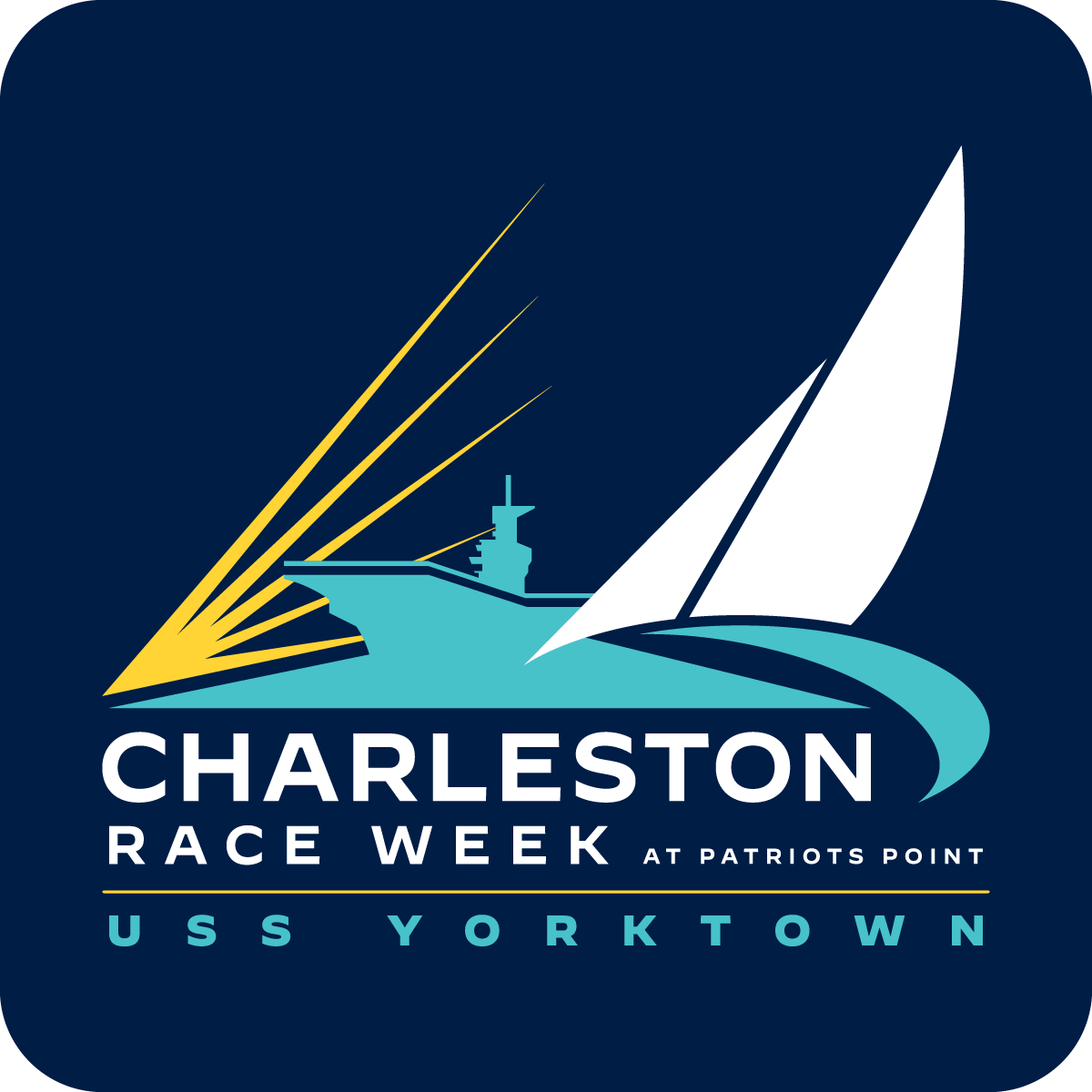Charleston Delivers the Goods — Opening Day of Sperry Top-Sider Charleston Race Week Brings Epic Breeze and Monster Competition
Charleston, South Carolina (April 19, 2013) — Sperry Top-Sider Charleston Race Week has a reputation for consistent, solid breeze. In fact, Charleston’s great wind is one of the big reasons this event has grown so spectacularly over the past decade. Even so, today may have been a case of “too much of a good thing” for some competitors, though it was just perfect for others. As of the end of the day, competitors throughout the fleet were working hard to repair broken boats and broken bodies, with an eye toward more mellow conditions that were forecast for Saturday.
Rolex Yachtsman of the Year and America’s Cup standout Terry Hutchinson was worn out but smiling after his first day ever racing in the Melges 20 fleet, and first ever at this event. T-Hutch sails with Jim Richardson aboard Barking Mad, and he says the class is perfect training for the bigger boats that Richardson campaigns.
“We knew Jim needed to get as much time in as possible in order to get ready for two big boat world championships this summer, and sailing a Melges 20 in Charleston certainly fit the bill,” said Hutchinson. The champion tactician says he is extremely happy that he’s spent so much time recently working out hard. “As physical as this boat is, when the wind pipes up to 20-plus like today, I feel lucky to have spent so much time in the gym.”
The final race saw gusts well into the high 20s on the inshore courses, and before the afternoon was over, two boats lost their masts; Richard Davies Section 16 was first, followed by Lake Michigan’s Bob Hughes on Heartbreaker. Hard luck for both, but especially for Hughes, who was winning the regatta at that point. “We’re putting a new mast in as we speak, and we’re going to be out there fighting for every inch tomorrow,” said Hughes.
Despite the blustery winds, every race officer managed to pull off some slick work, getting in up to four races in the Melges 20 and 24 and the Viper and J/70 Classes. Most other classes sailed three races – more than enough for most teams. “That was just about perfect for our new boat,” said Eric Vigrass, trimming aboard the winning Viper 640 Jackpot, just launched last week. “After quite a few Charleston Race Weeks, we’ve learned that the wind will almost always come in, and that there’s probably no better place to race on Earth.” A number of the Viper sailors chose to sit out the final race of the day due to the lively characteristics of these ultra-light sportboats when the wind jumps into the 20s.
In the regatta’s most numerous class, the 55-boat J/70 group, the action was tight and tumultuous. Longtime J/24 standout and sailmaker Tim Healy and his team aboard Helly Hansen rode a score line of 5,3,3,1 to end the day with a five-point lead over his nearest rival.
On the two offshore circles, the wind was slower to build and far more manageable, though the seas were big and boisterous. Among the nearly 20 boats racing in the Pursuit Class were three sexy Class 40 boats – the fastest growing offshore raceboat fleet in the world. Charleston-based young guns Tim Fetsch and Ben Poucher sailed Icarus Racing to a first place on the 18.6 nm course despite ‘seriously puffy conditions”. “We led the Class 40s the entire race, through the fetch out the jetties and out to the turning mark, where the wind moderated,” said Fetsch. The fleet stayed locked together throughout the race, with Fetsch and Poucher finishing the course in just 2 hours and 10 minutes, only a boatlength ahead of Joe Harris’ Gryphon Solo II. “Working the kinks out for double-handed maneuvers is a big part of sailing in breeze,” Poucher explained. “It’s a real challenge, and the only way to do it right is with this kind of practice.”
Elsewhere on the offshore racing circles, John Hele’s Daring won the day in the five-boat Swan 42 Class with three first-place scores. The team’s tactician, Brad Read, joked about the success owing to dumb luck and local knowledge – the boat is based in Rye, N.Y. – but later attributed this success to the crew’s cohesive mechanics. “It was really quiet on board. No drama at all.” Read dug into his bag of tricks in the first race, pulling a ‘Sambuca’ gybe-set, which gave them the downwind separation they needed to launch them to victory. “I think that first race really cemented our confidence,” said Read, adding that these five boats represent the upper tier of the Swan 42 Class, and “on any given day any one of these boats can win.”
On the South offshore course, the big local boats kept hoping for the breeze that their heavier craft need to really get going – and finally it came. “We saw the dial start hitting the high teens and we knew we were in the hunt at last,” said Mark Thomas, trimmer on the 40,000 lb. Stevens 50 Suwannee, which started the day with a less-than-stellar 6,6 score line. “With a strong start and good tactics, our crew pulled it together for the last race, and we ended with a win.” Thomas says his crew will need to dig deep in the lighter breeze forecast for tomorrow. “Regardless, we’re in this to enjoy ourselves, and we’re pretty sure we’ll have no problem succeeding at that.”
Racing begins tomorrow at 10:30 a.m. Please be sure to visit www.facebook.com/charlestonraceweek for up-to-the-minute news, photos, and updates throughout the weekend. Full results can be found at http://www.yachtscoring.com/event_results_cumulative.cfm?eID=742.

